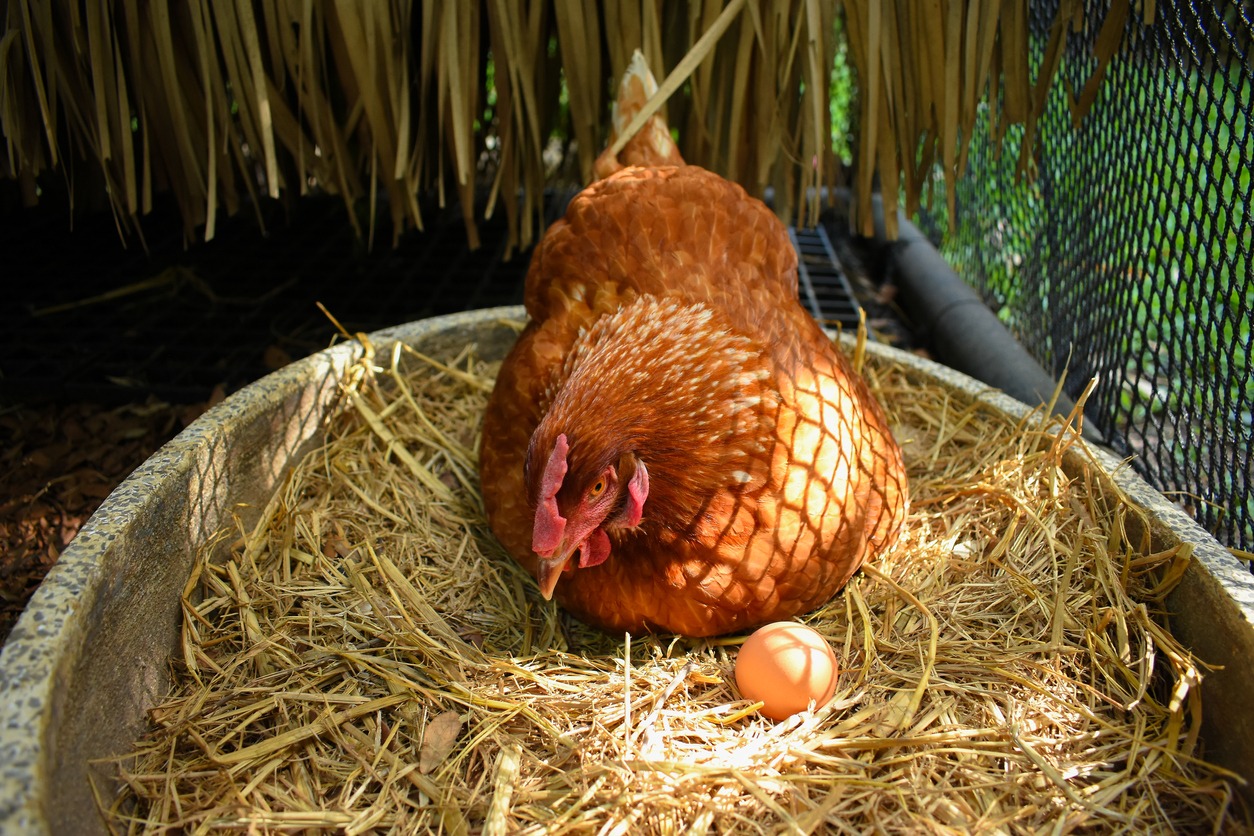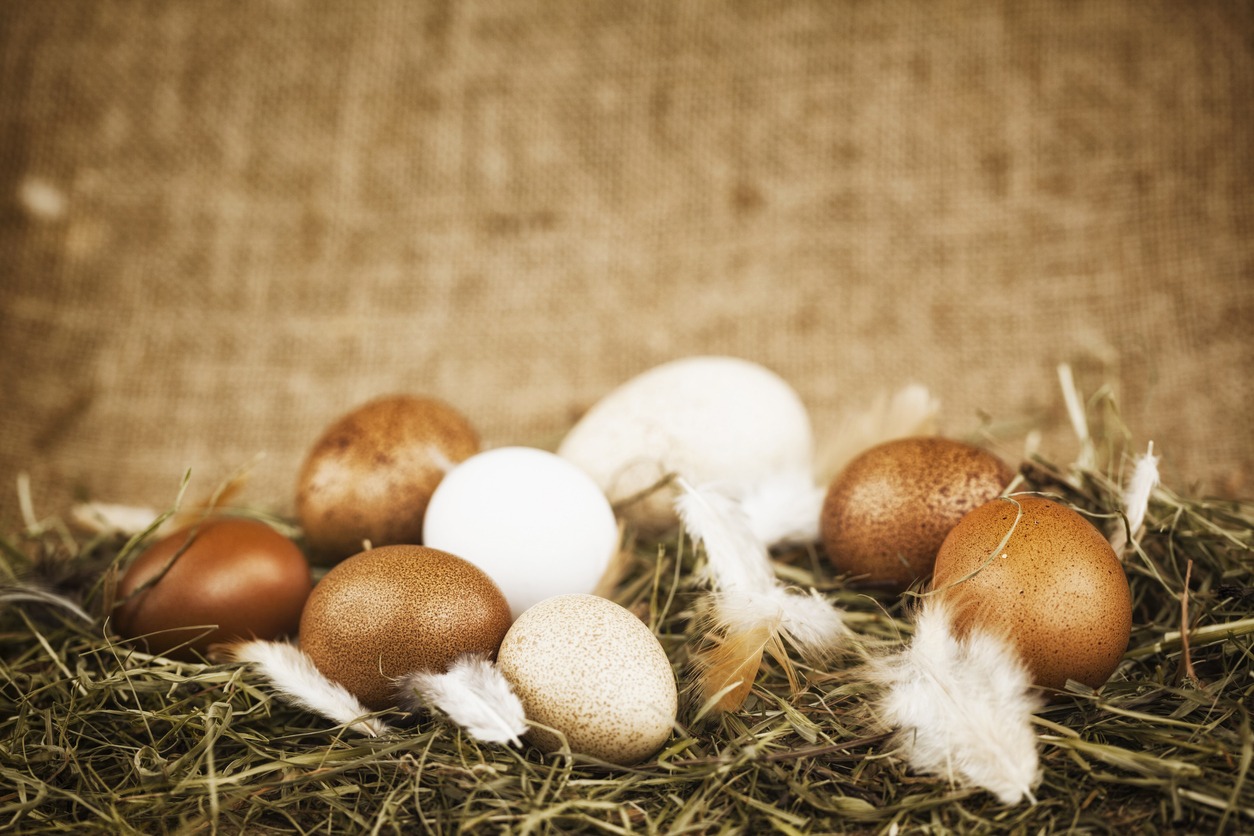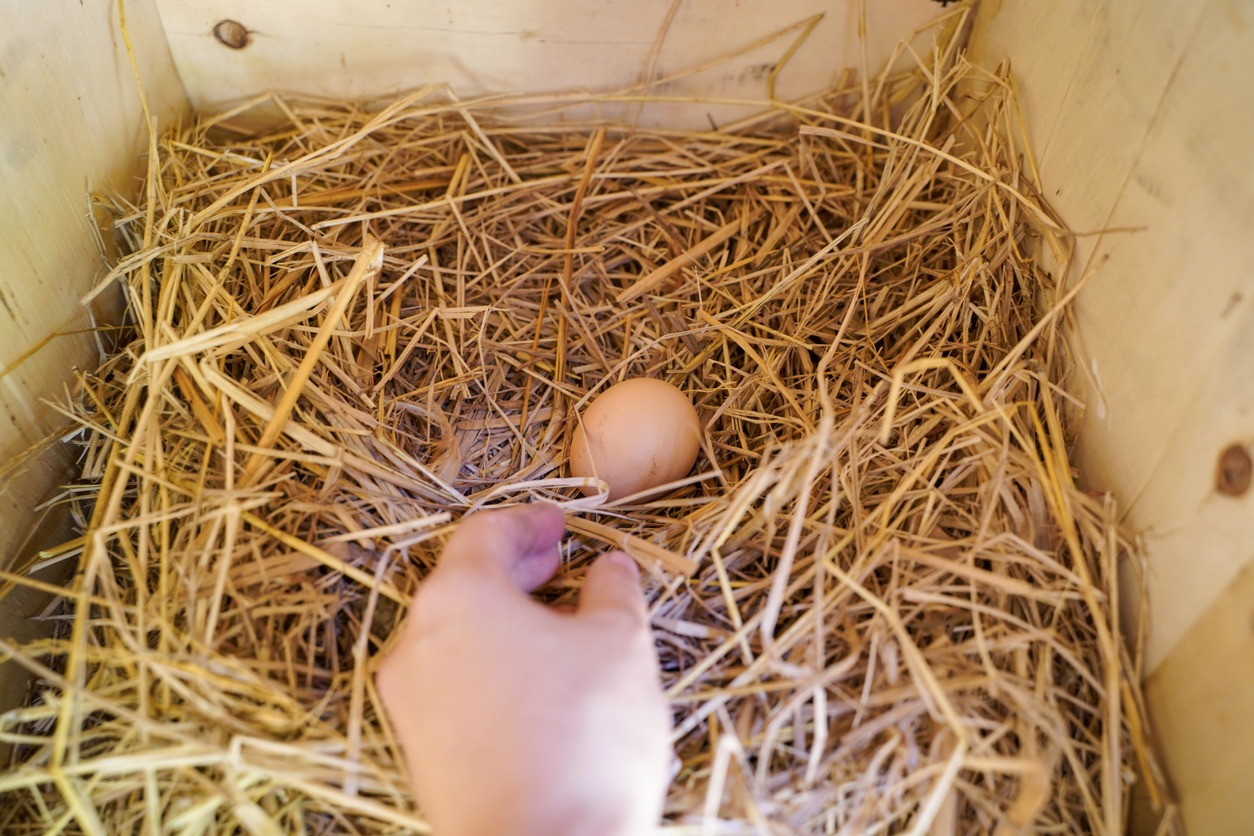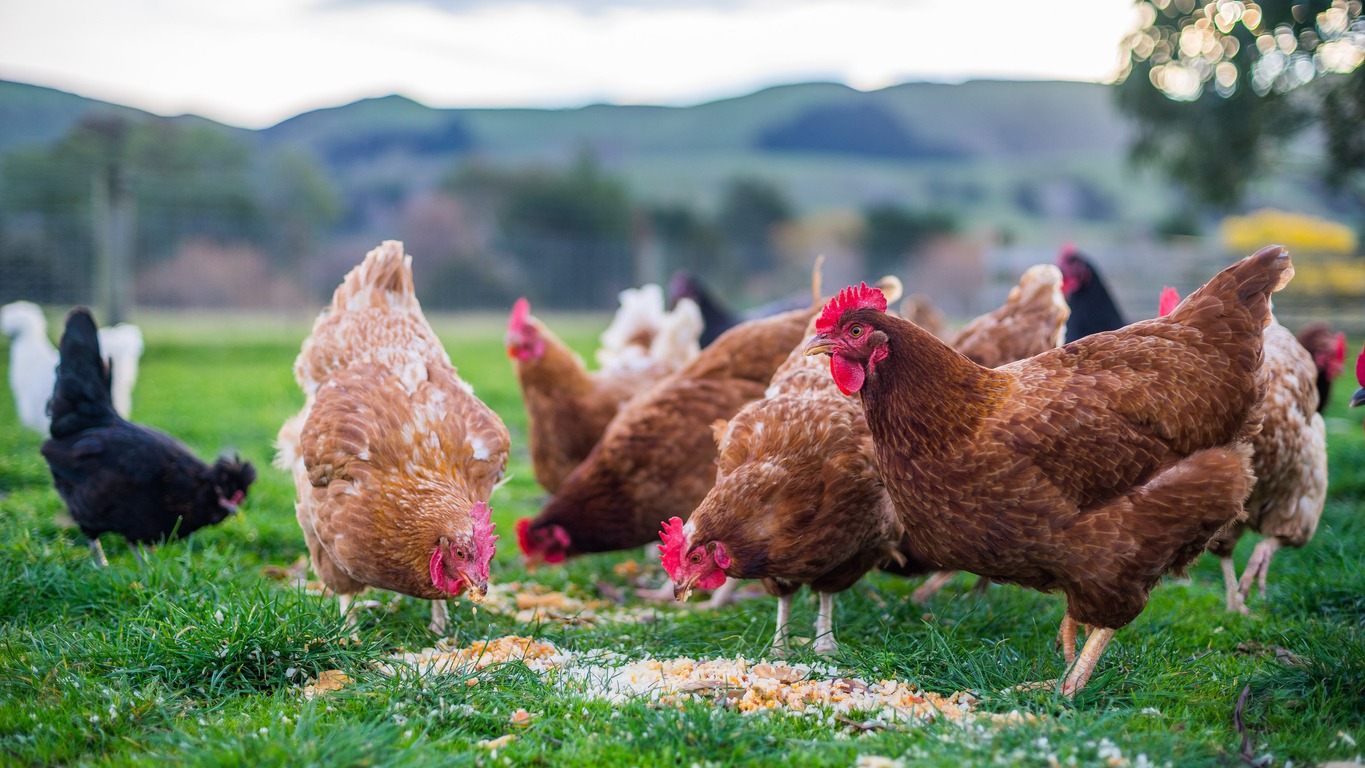From fluffy chicks to farmyard companions, chickens have captivated human interest for centuries. These remarkable creatures, known for their clucking chorus and comical waddles, offer more than just entertainment. While they serve as a healthy meat option for humans, chickens are also nature’s egg-laying champions. These poultry animals have long been providing us with a steady supply of nutrient-rich ovals that grace our breakfast tables and inspire culinary creativity. But have you ever wondered just how many eggs a chicken can lay over its lifetime? And what are the factors that can affect the number of eggs a chicken can lay? Learn all about it in this article.
How Many Eggs Can a Chicken Lay in its Lifetime?
Various factors such as breed, feed, environment, and lifespan influence a chicken’s lifetime egg production. Typically, the first two or three years are the most productive years for laying hens. During this period, a high-producing, well-fed backyard hen can lay around 250 eggs per year. It’s important to note that egg production can be affected by factors like breed, housing, weather, management, parasite load, and nutrition.
Commercial operations in the United States have reported an average of 276 eggs per year per hen. In Australia, small farm hens can produce around four to five eggs per week, totaling approximately 200 eggs annually. Canadian battery hens are estimated to lay eggs on seven out of eight days, resulting in approximately 320 eggs per year.
While commercial flocks are often culled when hens stop laying, or their productivity significantly declines, backyard chickens may continue to lay eggs for a longer period. Exceptional cases, such as Victoria, a British hen that laid two eggs at the age of 17, demonstrate that individual chickens can defy the norm. In the early 20th century, there were reports of long-lived hens, like Cornell Endurance and Cecilia, who laid over a thousand eggs in their lifetimes.
Regarding the duration of egg laying, most laying hens reach peak production at around 30 weeks of age, within their first year. The size of the eggs may start small and gradually increase over time. As hens age, the egg count will gradually decrease, and by the second year, they may lay around 80 percent of their first-year production. In the third and fourth years, the estimated production drops to approximately 70 percent and 60 percent, respectively. By the seventh year, hens will only lay 35% of its first-year production.
As hens slow down production around 6-7 years of age, retirement follows shortly after. Many laying hens can live for several more years, with an average life expectancy between 8 and 10 years.
How Many Eggs Does a Chicken Lay Every Day?
The number of eggs a hen lays each day is influenced by several factors. While it is commonly believed that hens lay one egg per day, the reality is more nuanced. During their prime laying period, which typically spans from around 20 weeks of age to 78 weeks of age, hens can produce approximately 300 eggs per year. However, this number is not a daily average but an annual estimate, as hens experience intermittent rest periods in their laying cycle.
Various factors can also influence the egg production of hens. A hen requires a sufficient intake of calcium, as around 4 grams of calcium are needed to produce a single egg. Calcium deficiency can impact a hen’s ability to lay. Also, hens may undergo a molting period, typically around 18 months of age, during which their egg-laying may temporarily slow down.
While it takes approximately 24 to 26 hours for an egg to form, a hen does not always immediately initiate a new laying cycle after laying an egg. The sensitivity of a hen’s reproductive system to light exposure plays a role in determining the timing of egg laying. As a result, a hen may occasionally skip a day or more before laying another egg.
It is worth noting that young hens, during their maturation phase, may occasionally lay two eggs in a day or produce eggs with double yolks. However, this is relatively rare and becomes less common as the chicken matures. In general, mature chickens can lay a maximum of one egg per day.
While it is theoretically possible for a chicken to lay two eggs in a day, it is highly unlikely that a hen consistently lays more than one egg daily. Getting three eggs from a single chicken in one day is impossible – and if you experienced finding so, you have some investigation to do. You may have a “rooster” that’s actually a hen, too. Or perhaps a family member played a prank on you, or you simply forgot to collect eggs the day before, or you missed one. Also, your hen may have laid an egg after your collection. While two eggs from one chicken are rare, three isn’t possible.
Why Does It Take One Day To Lay An Egg?
The process of laying an egg is a remarkable and intricate journey that takes approximately 24 hours to complete, with the majority of the process occurring overnight. This time is necessary for forming a strong shell made of calcium, which protects the delicate yolk inside from bacteria.
The egg-laying process begins when a hen releases a yolk from her ovary. The left ovary, the only functional one in hens, contains follicles of varying sizes and maturity. Once a follicle matures, it becomes a yolk or vitellus, which travels from the ovary to the oviduct. Similar to human females, female chicks are born with all their yolks, or ova, in their ovaries. As the singular yolk enters the reproductive tract, strands of white protein wrap around it, forming the egg white or albumen. This spinning motion helps keep the yolk centered within the egg. A double membrane is then added, and the characteristic oval shape of the egg is formed.
The subsequent 20 hours are dedicated to the formation of the eggshell. For a robust shell, a hen requires adequate calcium levels, just as humans need calcium for strong bones. Hens obtain calcium from their diet, but chicken farmers often supplement their feed with additional calcium sources, such as crushed oyster shells, to ensure optimal eggshell strength. If a hen doesn’t receive enough calcium, she may draw calcium from her own bones, similar to how a human fetus obtains calcium from the mother during pregnancy.
Finally, the egg travels through the oviduct to the vagina, with the pointy end facing downward. As the egg exits the hen’s body, a clear coating called the “bloom” or “cuticle” covers the shell, sealing the thousands of shell pores and protecting the egg from bacterial intrusion. The egg flips during this process, so the more rounded end is downwards, ensuring a gentle landing in the nest.
Factors that Affect Hen’s Egg Production
Sometimes, chickens undergo a change in their laying pattern. Last week, your chickens may have been laying around 5-7 eggs a week, but this week you may get only two from all of them. Why is that so?
Modern chickens are now interbred to produce high volumes of eggs throughout the year, but many factors can affect a chicken’s egg-laying rate, including:
1. Age
A hen’s egg production is typically highest during her prime laying period, which is usually between 20 weeks of age (point of lay) and around 78 weeks of age. The first two years of a hen’s life is when she is at her most prolific. As hens get older, their egg production tends to decline. However, egg weight slightly increases with age.
2. Breed
Different chicken breeds have varying levels of egg-laying capabilities. If you want to take care of chickens specifically for producing eggs, you must take note of the breeds that lay proficiently.
Some chicken breeds can lay 250 to 300 eggs a year under optimum conditions, including:
- Ameraucana
- Australorops
- Delaware
- Golden Comet
- Leghorn
- New Hampshire Red
- Orpingtons
- Rhode Island Red
- Plymouth Rock
- Red Star
- Sussex
Other breeds lay fewer eggs – around one a week – such as the Cubalaya, Phoenix, Sultan, and Yokohama. Meanwhile, game breeds like the American Gamefowl and Old English Game lay about 100 eggs a year. Also, there are show birds that are bred for their looks rather than their eggs.
3. Nutrition
A well-balanced and nutritious diet is crucial for optimal egg production. Hens require a diet rich in protein, vitamins, minerals, and calcium to support the development of healthy eggs. Inadequate nutrition can result in reduced egg production or smaller-sized eggs.
Among the nutrients, protein is absolutely necessary. Since eggs are made of protein, chickens that lack protein will lay fewer eggs. Once a hen reaches 20 weeks of age, it should be fed a 15-18% protein feed for optimum laying. Calcium is also highly essential and is often supplemented.
To make sure your chickens get the most nutrition, avoid feeding your bird too many treats like table scraps and scratch grains. If you get them full, they won’t eat as much of their protein-rich feed, so their daily protein intake is decreased.
4. Lighting
Hens’ reproductive systems are influenced by the amount of light they receive. They are typically more productive when exposed to longer periods of light. In commercial settings, artificial lighting may be used to extend the daylight hours and stimulate egg production. However, natural variations in daylight length throughout the year can also impact a hen’s egg-laying patterns.
5. Stress
Stressful conditions, such as overcrowding, the presence of predators, extreme temperatures, or sudden changes in the environment, can disrupt a hen’s reproductive cycle and reduce egg production. Providing a calm and comfortable environment for hens is important to maintain consistent egg production. Also, hens are social animals, and they need to be well-socialized with their groups to achieve optimum egg-laying.
6. Health and Disease
Obviously, when a hen is sick or injured, it won’t be at maximum egg production as its body focuses on recovery. Health issues such as internal or external parasites, infections, nutritional deficiencies, reproductive disorders, or diseases can all impact a hen’s ability to lay eggs. Regular health checks and proper veterinary care are essential for maintaining optimal egg production.
7. Molt
Molting is a natural process in which hens shed their feathers and grow new ones. During this period, which typically occurs after the first year of laying, hens temporarily stop or reduce egg production while diverting their energy toward feather regrowth. Molting can last several weeks, affecting overall egg production.
8. Seasonal Variations
Hens naturally respond to changes in daylight length and environmental conditions. The season may affect their broodiness, which may boost or reduce egg-laying. Typically, hens lay more during the spring breeding season. Meanwhile, egg production tends to decrease during the shorter days of fall and winter. As the days become shorter, lack of sunlight decreases hormone levels, and egg production significantly slows down.
Note that while these factors can influence a hen’s egg production, individual variations among hens can also occur. Some hens may naturally be more prolific layers than others, regardless of external factors.
Conclusion
It takes over a day to form an egg, so the best-laying chicken breeds can lay about 5-6 eggs a week in their first two years of life. The number of eggs they lay decreases over time, and most hens stop laying eggs at around seven years old.
There are many factors that can affect a hen’s egg production, and it is for poultry farmers and backyard chicken keepers to understand that. Age, breed, nutrition, lighting, stress, health, seasonal variations, and molting all play a role in determining the quantity and consistency of egg production.




